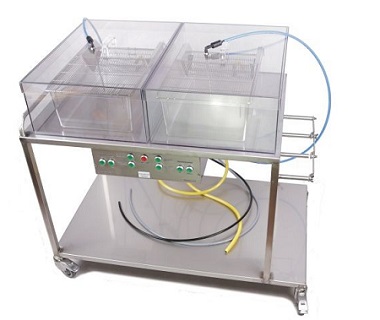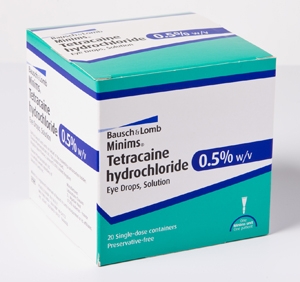Animal Euthanasia Inhaled Agents-Carbon Dioxide
Sep 29,2020
Introduction
Euthanasia is derived from the Greek terms eu (good) and thanatos (death) and is considered a method to end an individual’s life as rapidly as possible with little to no pain or distress associated with the procedure (American Veterinary Medical Association, 2013; Close et al., 1996, 1997). In order to be considered euthanasia, the procedure must result in rapid loss of consciousness, followed by loss of vital body functions (respiration, heartbeat, and brain function). It is crucial that euthanasia be performed with consideration of the animal’s welfare and with the highest degree of respect. In addition, all aspects of euthanasia, not just the method chosen, should be evaluated to ensure that pain and distress are minimized. This includes preeuthanasia procedures such as handling, restraint, and the environment, as well as confirmation of death (Canadian Council On Animal Care in Science, 2010; United Kingdom House of Commons, 1986). Furthermore, it is prudent that the animal’s remains and euthanasia solutions are used and disposed of appropriately and legally (American VeterinaryMedical Association, 2013).
It is essential that personnel are educated and trained in the appropriate and safe techniques for all aspects of euthanasia, which includes preeuthanasia handling and restraint, and understand the underlying justifications for euthanasia. This not only aides in the humane treatment of animals, ensuring as little distress as possible, but can also help mitigate any psychological impacts on the individual (caring–killing paradox) (American Veterinary Medical Association, 2013;Canadian Council On Animal Care in Science, 2010). In addition, if the method chosen involves controlled substances, it is important to institute proper storage and diversion control to prevent abuse, and in some cases suicide.Most euthanasia agents have a narrow therapeutic index or excessive side effects and are not used in human medicine. Acepromazine, xylazine, T-61, barbiturates, and others have been used in suicide or suicide attempts (Perri, 2015; Giorgi and Bertini, 2000).

Euthanasia system - Animalab
Inhaled Agents
In general, inhaled methods of euthanasia fall into one of two mechanisms: (i) hypoxia and/or (ii) direct depression of neurons vital for life functions. It is imperative that crucial concentrations of the gases and vapors in the alveoli and blood are achieved to get the desired effect, rapid unconsciousness. Gas displacement, container volume, and gas concentration can all affect the time to onset of unconsciousness. Gases should be delivered in a calibrated and purified from; this is commonly accomplished through the use of a flow meter and/or pressure reducing regulator (American Veterinary Medical Association, 2013; Canadian Council On Animal Care in Science, 2010). Inhaled methods of euthanasia are not recommended for animals that are resistant to hypoxia or hold their breath like poikilotherms, diving animals, and neonatal animals (American Veterinary Medical Association, 2013; Canadian Council On Animal Care in Science, 2010; Close et al., 1996, 1997; Pritchett et al., 2005; Pritchett-Corning, 2009). In addition, rabbits tend to be distress when exposed to gasses and other methods may be more appropriate for this species (Close et al., 1996, 1997).
Although it can be difficult to determine if gas exposure is distressful to a specific species or individual, behavior while being exposed to the agent or aversion testing can provided some information. The results, as discussed in this section, can produce a large breath of recommendations for specific species or situations when using inhaled agents, which highlights the importance of choosing a method for specific situations and species. As a general recommendation, death should be confirmed by cession of vital signs or a definitive, secondary method of euthanasia should be performed to prevent recovery.
Carbon Dioxide
Inhaled carbon dioxide is likely one of the most studied and disputed euthanasia methods available. Because it is rapid, safe, inexpensive, and readily available it is the most common method of euthanasia for laboratory rodents (Artwohl et al., 2006). Respiratory exposure to CO2 causes respiratory acidosis, which in turn creates a physiological domino effect. Acutely, this small molecule rapidly diffuses from the lungs into the plasma and intracellular spaces, and when combined with water it produces carbonic acid which rapidly splits into bicarbonate and hydrogen ions. If the buffering capacity is exceeded in this dose-dependent process you get respiratory acidosis. The resulting acidification of the intracellular space and cerebrospinal fluid leads to suppressed nerve cell function and inhibition of central N-methyld- aspartate (NMDA) receptors causing anesthesia (American Veterinary Medical Association, 2013; Close et al., 1996, 1997; Martoft et al., 2003; Pritchett et al., 2005; Thomas et al., 2012). Prolonged exposure to CO2 and/or high concentrations of CO2 then leads to severe respiratory acidosis and depression of the respiratory centers of the brain, eventually resulting in death. Other actions include acidosis-induced depression myocardial contractility and direct myocardium effects (American Veterinary Medical Association, 2013; Pritchett et al., 2005; United Kingdom House of Commons, 1986).

Carbon Dioxide Euthanasia for Rats and Mice
Although eventual hypoxia results, it is not the direct mechanism of action resulting in death. The ideal rate of CO2 delivery appears to be species specific. For rodents, there has been conflicting reports with some recommending use of a prefilled chamber (100% CO2) for euthanasia (Artwohl et al., 2006; Canadian Council On Animal Care in Science, 2010), while others recommend a gradual fill method, with a fill rate of approximately 10–20% of chamber volume per minute (American Veterinary Medical Association, 2013; Burkholder et al., 2010; Close et al., 1996, 1997; Conlee et al., 2005). Conflicting recommendations have also been published for swine and poultry (American Veterinary Medical Association, 2013; Close et al., 1996, 1997; Grandin, 1994). Furthermore, 100% exposure is recommended in rabbits and ferrets, but these animals may also be distressed at any exposure (Close et al., 1996, 1997; Fitzhugh et al., 2008). Regardless of the rate of delivery, use of compressed CO2 gas in cylinders with flowmeters to precisely deliver the gas is the only acceptable source (American VeterinaryMedical Association, 2013; Artwohl et al., 2006; Canadian Council On Animal Care in Science, 2010; United Kingdom House of Commons, 1986). Euthanasia can be accomplished over a wide range of concentrations (American Veterinary Medical Association, 2013; Canadian Council On Animal Care in Science, 2010; Close et al., 1996, 1997; Leach et al., 2002; United Kingdom House of Commons, 1986).
Many studies have looked at effect of gas combinations to mitigate the negative aspects of CO2 euthanasia, with variable results. It has been suggested that the addition of nitrous oxide to CO2 decreases the time to unconsciousness in mice and pigs, thus likely decreasing the distress the animal experiences (Llonch et al., 2012; Rault et al., 2013; Thomas et al., 2012).
Respiratory acidosis and other physiological events that occur during exposure to CO2 leads to successful euthanasia, but may also play a role in potential pain and distress an animal experiences when exposed to CO2. Resulting lactic acidosis leads to activation of the acid sensing ion channels (ASIC), which may cause pain or fear (American Veterinary Medical Association, 2013; Thomas et al., 2012). In addition, as indicated earlier, carbonic acid is created when CO2 combines with water.
This reaction occurs in the ocular, nasal, and oral mucous membranes and carbonic acid activates polymodal nociceptors and has an irritating effect on these areas (American Veterinary Medical Association, 2013; Close et al., 1996, 1997; Hawkins et al., 2006; Leach et al., 2002; United Kingdom House of Commons, 1986). CO2 also has a pungent odor and hypoxia may lead to a feeling of breathlessness, thus possible distress if unconsciousness is not rapid (American Veterinary Medical Association, 2013; Close et al., 1996, 1997; Hawkins et al., 2006; Leach et al., 2002). Because of carbonic acid production, CO2 should not be dissolved in water to euthanize aquatic species (Canadian Council On Animal Care in Science, 2010). Some recommend that it not be used as a sole agent in species that have shown significant aversion to CO2 exposure such as pigs, mink, ferrets, and rodents (American Veterinary Medical Association, 2013; Canadian Council On Animal Care in Science, 2010; Conlee et al., 2005; Fitzhugh et al., 2008; Leach et al., 2002; Makowska et al., 2009; Valentine et al., 2012). However, other studies have shown that it can be used successfully in pigs and rodents (Burkholder et al., 2010; Grandin, 1994; Hackbarth et al., 2000; Sharp et al., 2006).
Since CO2 exposure is the most common method of euthanasia for laboratory rodents, it is important to consider the biochemical effects and possible artifacts that may be created if this method of euthanasia is elected. CO2 exposure can stimulate enzymes in the glycolytic pathway, and affect red blood cell parameters (Artwohl et al., 2006). In addition, lung pathological artifacts such as edema and hemorrhage have been reported (Danneman et al., 1997; Fawell et al., 1972).
Advantages of CO2 as a euthanasia agent is that it is heavier than air so less likely to displace out of container (however, consider the height of the animal), generally has a rapid onset, is relatively inexpensive, and nonflammable and nonexplosive (American Veterinary Medical Association, 2013; Close et al., 1996, 1997; Llonch et al., 2012). However, the advantages must be heavily weighed with the substantial and conflicting reports on the potential for pain and distress with this method, which make it difficult to have generalized recommendations.
- Related articles
- Related Qustion
- Dry ice:Chemical formula,Uses,Safety Mar 19, 2024
Dry ice is the solid form of carbon dioxide (chemical formula CO2), comprising two oxygen atoms bonded to a single carbon atom.
- Is carbon dioxide a mixture or a pure substance? Feb 29, 2024
Carbon dioxide (CO2) is indeed considered a pure substance. A molecule of carbon dioxide (CO2) is made up of one carbon atom and two oxygen atoms.
- Non-polar molecule with polar bonds: CO2 Dec 19, 2023
Carbon dioxide is nonpolar because it has a linear, symmetrical structure, with 2 oxygen atoms of equal electronegativity pulling the electron density from carbon at an angle of 180 degrees from either direction.
Tetracaine hydrochloride is also known as ropivacaine hydrochloride, pantocaine, pantocaine and four ropivacaine hydrochloride. It is easily soluble in water and ethanol, but insoluble in ether, benzene.....
Sep 28,2020Antineoplastic agentsMilbemycin Oxime (Milbemycin Oxime) is a macrolide antibody internal and external parasite drug, and is an oxime derivative of Milbemycin A3 and A4.....
Sep 30,2020APICarbon dioxide
124-38-9You may like
- Yohimbe - Uses, Side Effects, Benefits, and Warnings
Apr 11, 2022
- Paraldehyde - Uses, Side Effects, and Environmental Fate
Nov 4, 2021
- What is Perfiuoroisobutylene?
Oct 26, 2021
- CARBON DIOXIDE USP/EP/BP
-

- $1.10 / 1g
- 2021-07-29
- CAS:124-38-9
- Min. Order: 1g
- Purity: 99.9%
- Supply Ability: 100 Tons min





